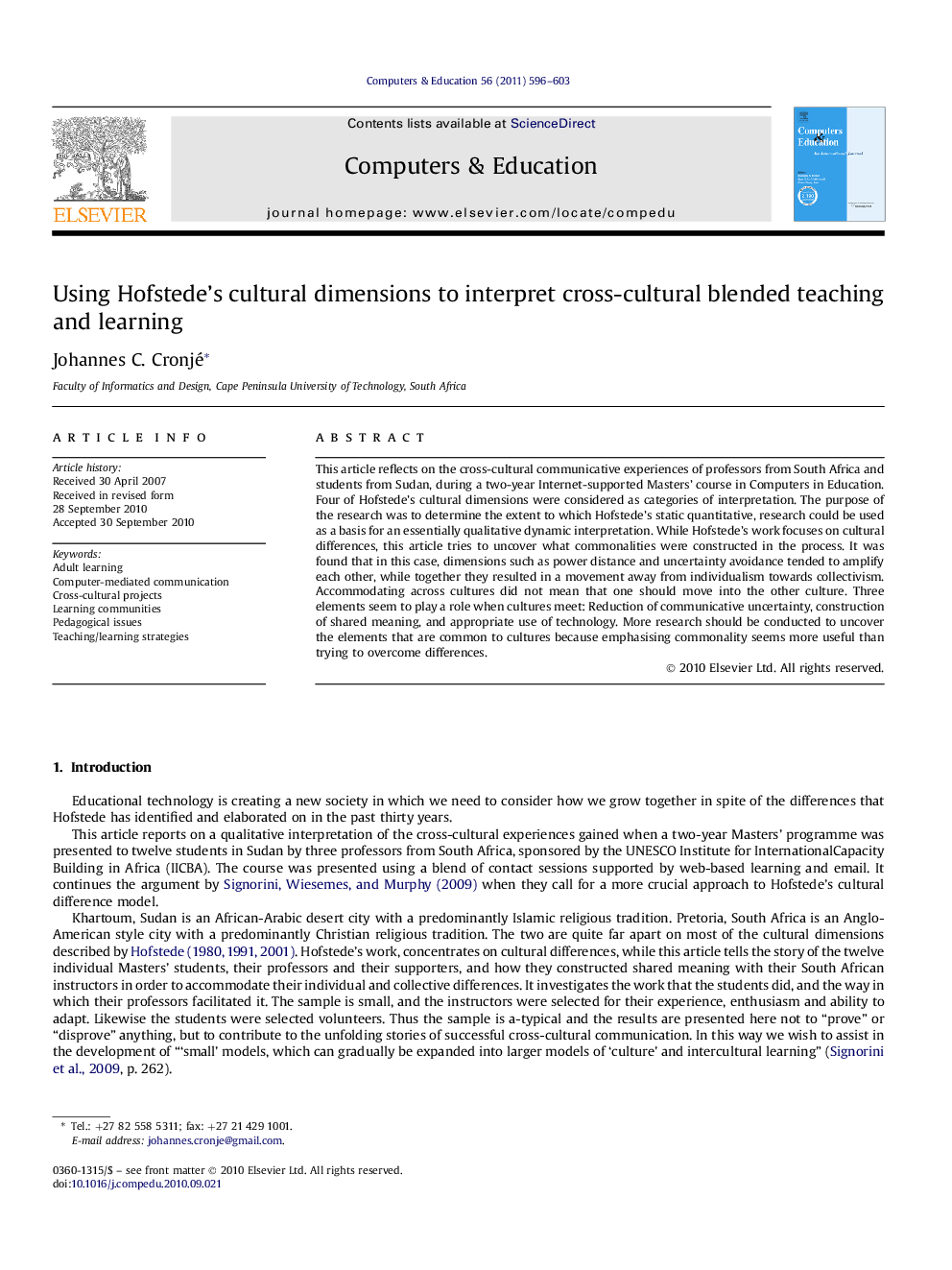| کد مقاله | کد نشریه | سال انتشار | مقاله انگلیسی | نسخه تمام متن |
|---|---|---|---|---|
| 348807 | 618203 | 2011 | 8 صفحه PDF | دانلود رایگان |

This article reflects on the cross-cultural communicative experiences of professors from South Africa and students from Sudan, during a two-year Internet-supported Masters’ course in Computers in Education. Four of Hofstede’s cultural dimensions were considered as categories of interpretation. The purpose of the research was to determine the extent to which Hofstede’s static quantitative, research could be used as a basis for an essentially qualitative dynamic interpretation. While Hofstede’s work focuses on cultural differences, this article tries to uncover what commonalities were constructed in the process. It was found that in this case, dimensions such as power distance and uncertainty avoidance tended to amplify each other, while together they resulted in a movement away from individualism towards collectivism. Accommodating across cultures did not mean that one should move into the other culture. Three elements seem to play a role when cultures meet: Reduction of communicative uncertainty, construction of shared meaning, and appropriate use of technology. More research should be conducted to uncover the elements that are common to cultures because emphasising commonality seems more useful than trying to overcome differences.
Journal: Computers & Education - Volume 56, Issue 3, April 2011, Pages 596–603